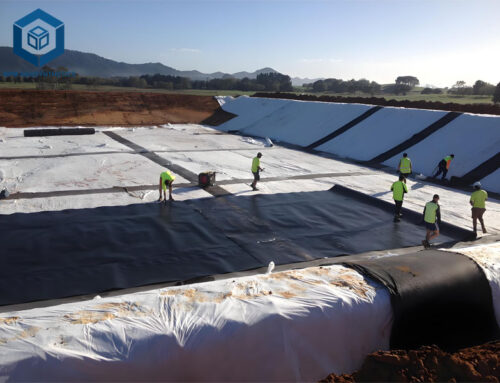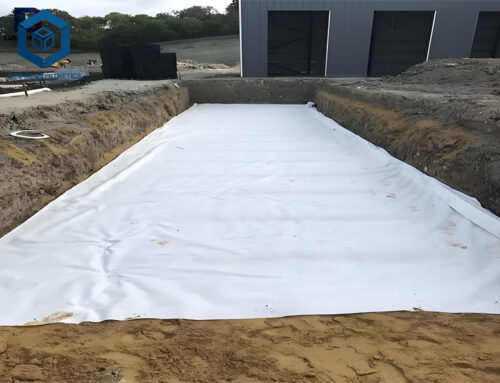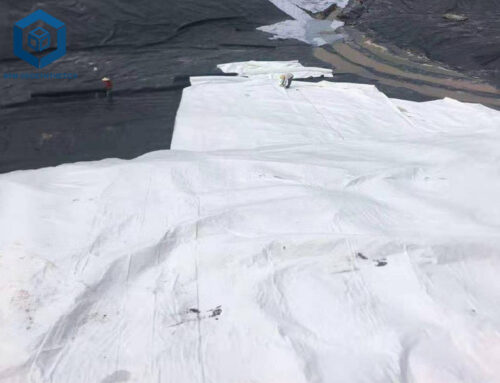When it comes to reinforcing, stabilizing, and protecting industrial sites, Geotech Cloth (geotextile) has become an indispensable material for engineers and project managers. As a leading innovator in geosynthetic solutions, BPM Geotextile specializes in high-performance non-woven and woven geotextiles designed to meet the rigorous demands of industrial applications—from road construction and landfill engineering to erosion control and drainage systems.
With superior tensile strength, puncture resistance, and filtration properties, BPM’s Geotech Cloth provides long-term stability and cost-efficiency for large-scale projects. Whether used for soil separation, reinforcement, or filtration, our geotextiles ensure enhanced durability and performance in even the most challenging environments.
In this article, we explore the key functions of Geotech Cloth and how BPM Geotextile delivers reliable solutions for industrial infrastructure, environmental protection, and civil engineering projects worldwide.
Understanding Geotech cloth
Geotech cloth are permeable textile materials made from synthetic polymers such as polypropylene, polyester, or nylon, or from natural materials like jute. These materials are engineered to have specific physical and chemical properties that enable them to perform effectively in different geotechnical applications. They are typically in the form of woven or non – woven fabrics.
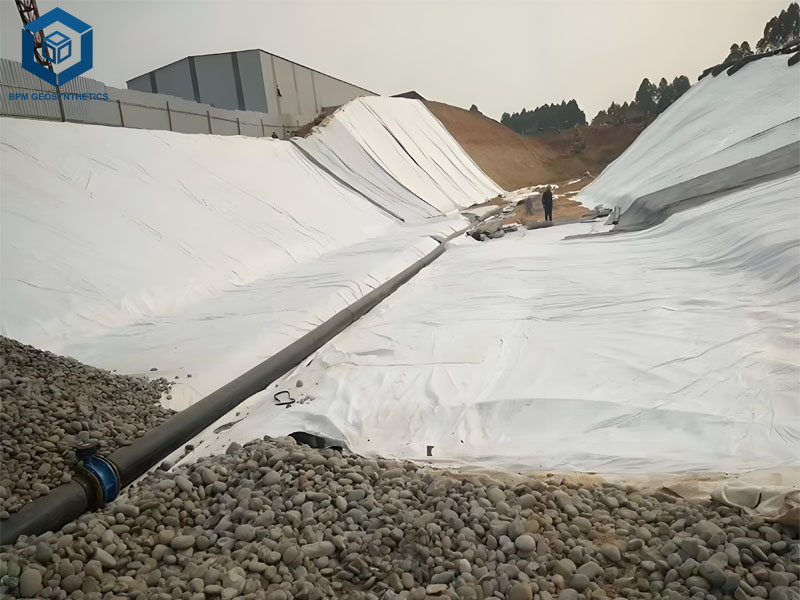

2. Types of BPM Geotech cloth
2.1 Woven Geotech cloth
Woven Geotech cloths are constructed by interlacing yarns in a pattern similar to traditional fabric weaving. This type of Geotech cloth offers high tensile strength in both the warp (lengthwise) and weft (cross – wise) directions. They are often used in applications where strength and durability are critical, such as reinforcement of retaining walls and steep slopes.
2.2 Non – Woven Geotech cloth
Non – woven Geotech cloths are made by bonding or entangling fibers together, rather than weaving. This results in a more random fiber arrangement. Non – woven Geotech cloths are known for their excellent filtration, drainage, and separation properties. They can allow water to pass through while retaining soil particles, making them ideal for applications like soil stabilization and filtration in drainage systems.
3. The Characteristics of Geotech Cloth
3.1 Permeability:
Geotech cloth allows water to flow through easily. At the same time, it effectively holds soil in place. This unique feature makes it ideal for drainage systems. Additionally, it works perfectly for filtration projects.Engineers often choose geotech cloth for road construction. It prevents soil mixing while enabling proper water drainage. Furthermore, it strengthens weak ground conditions.
3.2 Strength and Durability:
Geotech cloth offers different strength grades to handle various loads. These materials bear soil pressure effectively while maintaining stability.High-quality versions resist tearing under stress. They also withstand punctures from sharp objects during installation.Furthermore, premium geotextiles endure harsh environmental conditions. They perform reliably in both wet and dry applications.
3.3 Separation:
Geotech cloth effectively separates different soil layers. This prevents materials from mixing together.It maintains structural integrity in road construction. Retaining walls also benefit from this separation.Embankments stay stable with proper layer division. The fabric acts as a reliable barrier.Additionally, it reduces maintenance needs over time. Projects last longer with this protection.
3.4 UV Resistance:
UV-resistant geotextiles maintain strength under sunlight exposure while extending service life significantly. These specialized fabrics resist degradation from solar radiation, ensuring reliable outdoor performance year after year. Engineers prefer them for exposed applications like erosion control and landfill covers where durability matters most. BPM Geotextile’s UV-stable products deliver consistent protection against weathering effects. Such materials prevent premature failure in harsh environments while reducing replacement costs.
4. The Applications of Geotech Cloth
4.1 Road Construction
- Subgrade Stabilization: Geotech clothsare placed between the subgrade soil and the base course of a road. They help to distribute the load of the traffic more evenly, prevent the intrusion of fine – grained soil into the base course, and improve the overall stability of the road structure. This is especially important in areas with soft or weak subgrade soils, reducing the risk of rutting and pavement failure.
- Drainage: In road construction, non – woven geotextiles are used as part of the drainage system. They can be installed around perforated pipes to prevent soil particles from clogging the pipes while allowing water to flow freely, thus improving the efficiency of subsurface drainage and reducing the potential for water – related damage to the road.
4.2 Earthwork and Slope Protection
- Slope Reinforcement: Geotextiles are used to reinforce slopes to prevent soil erosion and slope failure. When installed on a slope, they increase the shear strength of the soil mass, resisting the forces of gravity and water runoff. Woven geotextiles are often used in combination with soil nails or other reinforcement methods for steeper slopes, while non – woven geotextiles can be used for more gentle slopes to protect against surface erosion.
- Erosion Control: In earthwork projects, geotextiles act as a temporary or permanent barrier against erosion. They can be laid on exposed soil surfaces to prevent the detachment and transportation of soil particles by wind or water. Biodegradable geotextiles made from natural fibers like jute are sometimes used for short – term erosion control during construction, as they break down over time and do not leave behind any long – term environmental impacts.
4.3 Hydraulic Engineering
- Retaining Walls: Geotextiles are used in the construction of retaining walls to improve their stability. They are placed behind the wall face to provide drainage and prevent the build – up of hydrostatic pressure. The geotextile allows water to drain out while retaining the backfill soil, reducing the lateral pressure on the wall and increasing its long – term durability.
- Flood Protection: In flood – prone areas, geotextiles can be used to create sandbag – like barriers or to line the banks of rivers and canals. They help to hold the soil in place during high – flow events, preventing bank erosion and protecting adjacent properties from flooding.
4.4 Agricultural and HorticulturalApplications
- Soil Amendment and Moisture Retention: In agriculture, geotextiles can be used to improve soil quality. For example, they can be placed between different soil layers to prevent the mixing of topsoil with subsoil during tillage. Non – woven geotextiles can also be used as mulch, helping to retain soil moisture, suppress weed growth, and regulate soil temperature, which is beneficial for crop growth.
- Greenhouse Applications: In horticulture, geotextiles are used in greenhouses for shading, ventilation, and moisture management. Shading geotextiles can reduce the amount of sunlight entering the greenhouse, protecting plants from excessive heat and light, while breathable geotextiles help with air circulation and humidity control.
4.5 Environmental Applications
- Landfill Liners: Geotextiles are an important part of landfill liner systems. They are used in combination with geomembranes to create a barrier that prevents the leakage of leachate (contaminated water from the landfill) into the surrounding soil and groundwater. The geotextile provides protection to the geomembrane from punctures by sharp objects in the waste, and also helps with drainage within the landfill.
- Mine Reclamation: In areas affected by mining activities, geotextiles are used to cover and rehabilitate the mined – out areas. They help to stabilize the soil, promote vegetation growth, and prevent the release of harmful substances from the mine tailings into the environment.

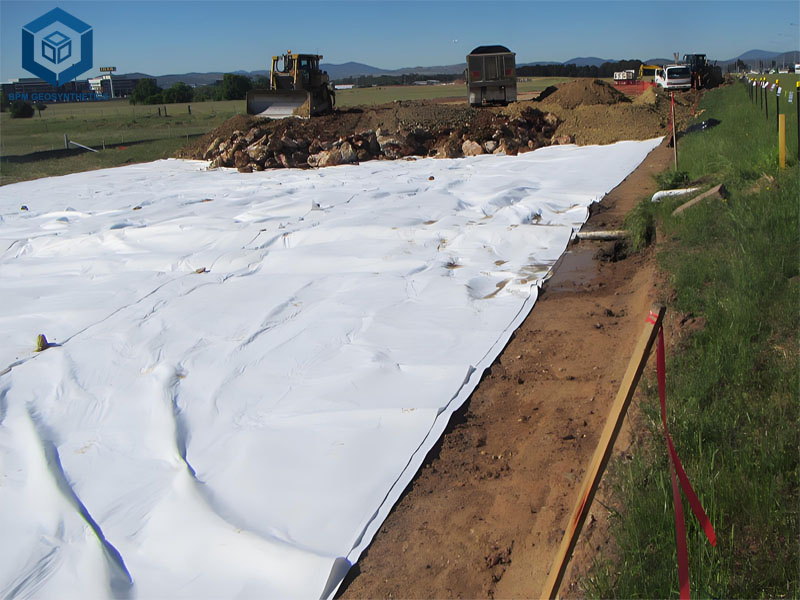
Summary
In summary, geotech cloth serves as a versatile and essential material for industrial projects, offering critical functions like soil separation, filtration, and reinforcement. From road construction to landfill engineering, its durability and performance make it indispensable for maintaining structural integrity in demanding environments. BPM Geotextile delivers high-quality geotech cloth solutions designed to meet rigorous industrial standards, ensuring long-term reliability and cost-efficiency.
Whether you’re stabilizing embankments, managing drainage systems, or reinforcing weak subgrades, BPM’s geotextiles provide the strength and resilience needed for success. Trust BPM Geotextile for innovative geosynthetic solutions that enhance your industrial projects—contact us today to find the right geotech cloth for your application.

